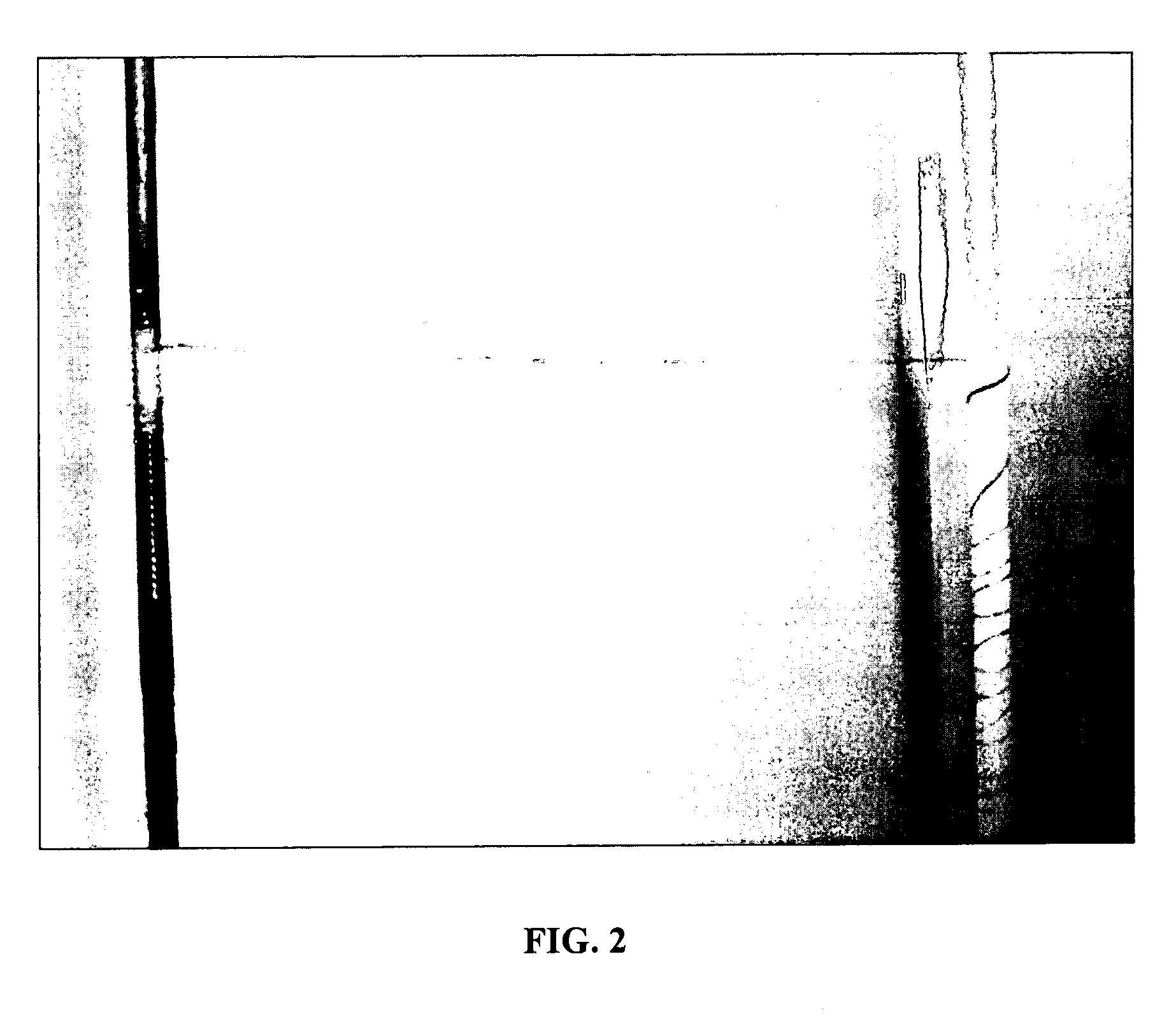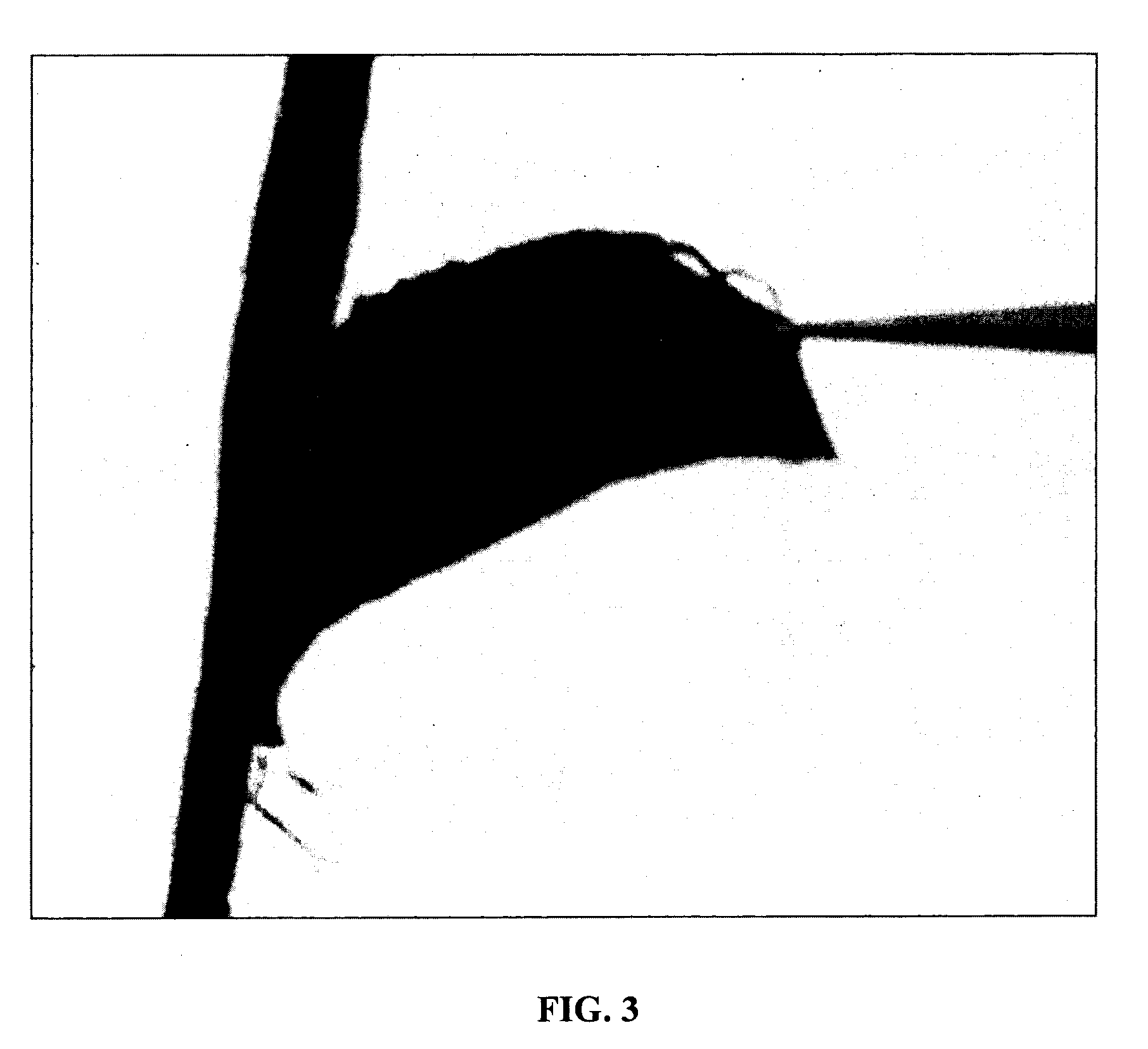Production of agglomerates from gas phase
a technology of agglomerates and gas phase, which is applied in the field of production of agglomerates from gas phase, can solve the problems of low carbon nanotube production volume and high cost, and is prohibitive for its use as a filler material in most large-scale structural and electrical applications, and the current cvd process. , to achieve the effect of reducing the cost of carbon nanotube production, and reducing the cost of carbon nano
- Summary
- Abstract
- Description
- Claims
- Application Information
AI Technical Summary
Benefits of technology
Problems solved by technology
Method used
Image
Examples
example 1
[0092] In a preferred embodiment of the invention, the process is carried out in the apparatus shown in FIG. 1. The apparatus comprises a vertically arranged cylindrical furnace 10 enclosing a vertically arranged cylindrical quartz reactor 12. Alternative reactors may be conical in shape. The reactor 12 has an inlet 14 at its upper end and an outlet 16 at its lower end. Positioned within the reactor 12 close to the inlet 14 is a nanotube catcher 18 in the form of a ring of metal wire. In alternative embodiments, the nanotube catcher 18 may be a ring of glass wire or of a magnetic material. Positioned within the reactor 12 close to the outlet 16 is a horizontally extending screw 20, suitably a stainless steel screw of 300 mm in length. In alternative embodiments, the screw may extend vertically or in other directions. The screw 20 is connected to a motor 22 and carries an internally threaded rod 21.
[0093] In use, the furnace 10 is heated to a high temperature. A solution of catalyst...
example 2
[0105] A process as set out above was carried out using a modified version of the apparatus of FIG. 1.
[0106] Spinning was conducted at the cold end of the reactor using a modified reactor with a cross piece at the end section of the tube. Spinning was normal to the gas stream. The spindle was made of a metal wire in a cubic shape (20×20×50 mm) in order to provide a large area for winding.
[0107] The spindle was located just out of the furnace at a temperature of about 100° C.
[0108] A solution of 2.3 wt % ferrocene and 3.0 wt % thiophene in ethanol was used as both the feedstock and catalyst precursor. This solution was injected through a needle into the top of the reactor (internal diameter 65 mm, 1400 nm long) which was heated to 1180° C. A catcher in the form of a thin metal rod was suspended from the lower part of the injector lance to encourage the formation of a long thin fibre. Without the catcher, the aerogel developed into a web traversing the tube below the hot zone, whic...
example 3
[0113] Multi-walled carbon nanotubes were produced using the reaction conditions of Example 1 and a modified version of the apparatus of FIG. 1.
[0114] The nanotubes were spun by using a mechanically driven spindle which was placed either at the furnace temperature with the spinning direction parallel to the gas stream or outside the furnace with the spinning direction normal to the gas stream. In the high temperature-spinning configuration, stainless steel studding (inner diameter 6 mm, 200 mm long) was used as the spindle. The studding was driven by a motor at the base of the reactor and rotated at 85 rpm at an angle of 5° from the vertical, The studding protruded 15 mm into the not zone (1180° C.) and the nanotubes were mainly wound onto this part of the spindle. The spinning process inside the reactor was observed via a mirror fixed at the base of the reactor and recorded by a video camera from outside of the reactor.
[0115] Scanning electronic microscopy showed good alignment o...
PUM
| Property | Measurement | Unit |
|---|---|---|
| temperature | aaaaa | aaaaa |
| length | aaaaa | aaaaa |
| length | aaaaa | aaaaa |
Abstract
Description
Claims
Application Information
 Login to View More
Login to View More - R&D
- Intellectual Property
- Life Sciences
- Materials
- Tech Scout
- Unparalleled Data Quality
- Higher Quality Content
- 60% Fewer Hallucinations
Browse by: Latest US Patents, China's latest patents, Technical Efficacy Thesaurus, Application Domain, Technology Topic, Popular Technical Reports.
© 2025 PatSnap. All rights reserved.Legal|Privacy policy|Modern Slavery Act Transparency Statement|Sitemap|About US| Contact US: help@patsnap.com



